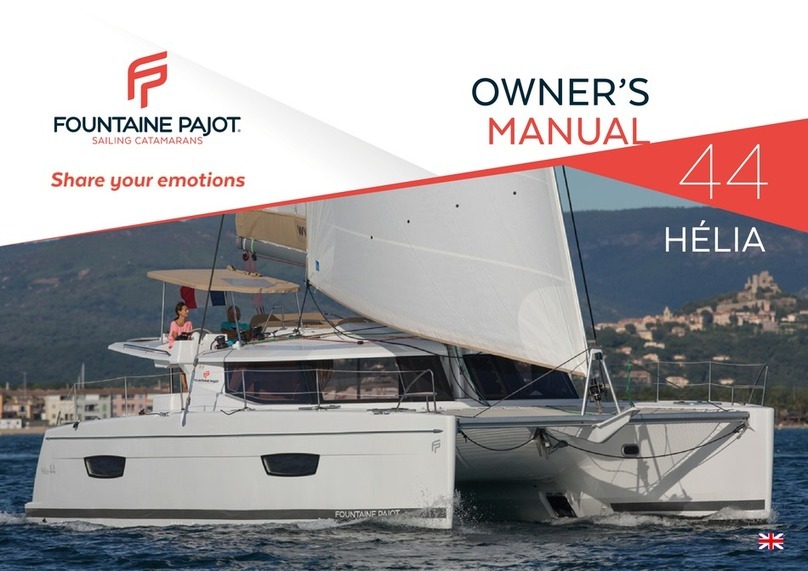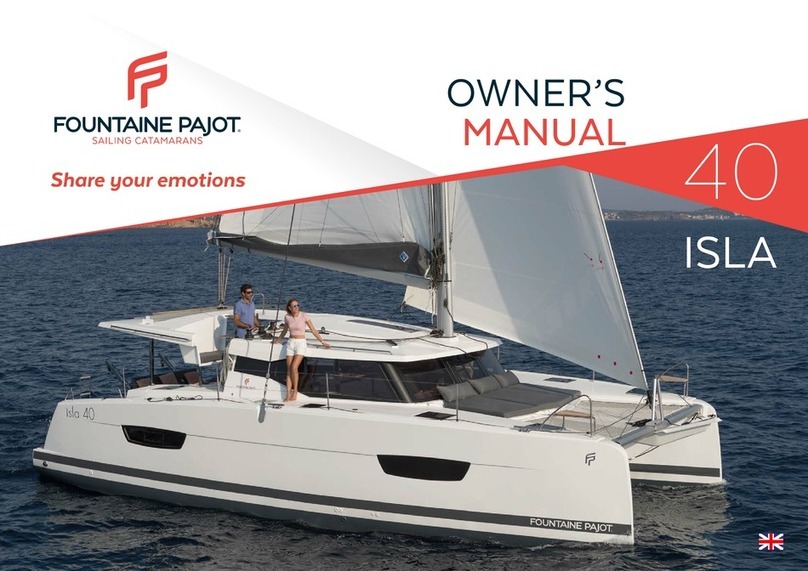COMFORT
A) Electricity............................................................................................................................22
A1) Electrical installations ......................................................................................................22
A2) 220V circuit (optional........................................................................................................23
A3) Power generator (optional) ...............................................................................................24
A4) Sockets on inverter (optional)............................................................................................24
B) Cold .....................................................................................................................................25
B1) 2-drawer galley fridge .......................................................................................................25
B2) Additional galley freezer or fridge (optional) ...................................................................26
B3) Additional cockpit fridge (optional) ...............................................................................26
C) Gas.......................................................................................................................................27
D) Water ..................................................................................................................................28
D1) Fresh water circuit .............................................................................................................28
Deck shower (mixer tap optional).............................................................................................29
D2) Sea water circuit (optional) ..............................................................................................29
D3) Using the toilets.................................................................................................................30
D4) Using the holding tanks.....................................................................................................32
D5) Shower evacuation .........................................................................................................33
D6) Sink evacuation .................................................................................................................33
D7) Bilge pumping ..................................................................................................................34
MAN OVER BOARD AND RECOVERY ..........................................................................35
FIRE PROTECTION ............................................................................................................36
A) Recommandations ...............................................................................................................37
B) Installation ..........................................................................................................................37
MAINTENANCE....................................................................................................................38
Drainage ..................................................................................................................................38


































